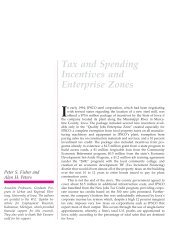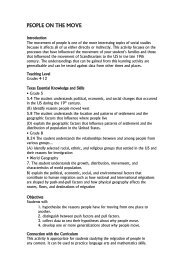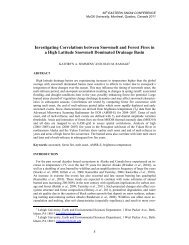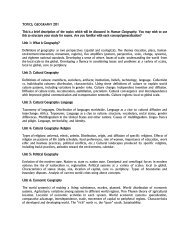Texas Social Studies Framework - Department of Geography ...
Texas Social Studies Framework - Department of Geography ...
Texas Social Studies Framework - Department of Geography ...
You also want an ePaper? Increase the reach of your titles
YUMPU automatically turns print PDFs into web optimized ePapers that Google loves.
Chapter 8: Implementing the TEKS: Other Players<br />
secondary sources. Students “read” the objects,<br />
photographs, or documents they encounter by<br />
progressing through the following steps:<br />
a) analyzing information (What is the artifact made<br />
<strong>of</strong>? What is the condition <strong>of</strong> the artifact? Was it<br />
used and does it show wear?)<br />
b) organizing and interpreting it (What does the<br />
object do? What other things serve the same<br />
purpose?)<br />
c) identifying frame <strong>of</strong> reference and point <strong>of</strong> view<br />
(Who used the object? Did different people use it<br />
different ways and for different purposes?)<br />
d) identifying bias in the material (Are all the<br />
people who used the artifact reflected in the<br />
historical record?)<br />
Teachers should encourage students to ask the museum<br />
staff about the different points <strong>of</strong> view <strong>of</strong> the artists,<br />
farmers, children, or soldiers who either created the<br />
artifacts or lived on the historic site. This interaction with<br />
the museum staff makes the experience even more<br />
memorable.<br />
Upon arrival students become involved in activities in a<br />
new environment. It is <strong>of</strong>ten difficult to carry a pencil<br />
and paper, and some museums may not allow this. The<br />
best strategy to ensure retention is to ask students to sit<br />
for a quiet moment during the visit and have them reflect<br />
on their surroundings and the experience. Have students<br />
write down their personal memories first, and then ask<br />
for volunteers to share their experiences. This activity<br />
also provides an opportunity to emphasize frame <strong>of</strong><br />
reference because not everyone participated in every<br />
activity in the same way and each will remember<br />
different experiences. Ask the students to write a brief<br />
summary <strong>of</strong> their most memorable experience to share<br />
with the class the next day.<br />
Teachers should participate in the program along with<br />
their class. Then they can facilitate discussion, remind<br />
students <strong>of</strong> the concepts learned, and bring the lesson to<br />
closure back in the classroom.<br />
Post Visit Reflection. Evaluating the experience, that is,<br />
what students gained from the experience, is crucial.<br />
Continue the reflection begun on site when the class<br />
reconvenes at school. Have the students communicate<br />
their points <strong>of</strong> view in written, oral, or visual forms. After<br />
students share their experiences, ask them to organize<br />
them into a meaningful pattern and explain their rational<br />
for the decisions.<br />
89<br />
89<br />
8) Teachers and students can make a museum <strong>of</strong> their<br />
own in the classroom.<br />
Most students collect, preserve, and interpret something,<br />
whether it’s baseball cards, stamps, dolls, or guppies.<br />
Help them understand the similarities between what they<br />
do and what the museum does. Think about what it takes<br />
to make an exhibit. Have the students design an exhibit<br />
on a topic <strong>of</strong> their choice, install it, and invite their<br />
parents to visit during an scheduled open-house.<br />
Middle and secondary students can get experience in<br />
producing thematic exhibits if they choose to participate<br />
in National History Day (), a program which encourages<br />
research and communication in a range <strong>of</strong> formats<br />
including exhibits, historical papers, media, and performance.<br />
The <strong>Texas</strong> State Historical Association () serves as<br />
the liaison between this national program and local<br />
schools. Winners move from regional fairs to state fairs<br />
to the national competition in Maryland, held each June.<br />
9) Museum educators and curators are both resources<br />
and role models.<br />
Students can learn more about collecting and researching<br />
by talking with the people who do it for a living, the<br />
curators and educators who work in museums.<br />
• Students can research museum-related pr<strong>of</strong>essions.<br />
• Invite museum representatives to the classroom<br />
as guest speakers.<br />
• Ask museum representatives questions about the<br />
jobs they do, about the role <strong>of</strong> volunteers in<br />
museums, and how helping museums helps the<br />
community.<br />
The <strong>Texas</strong> Historical Commission () observes Archaeology Awareness<br />
Week once a year. During this time, they provide<br />
information on contacting archaeologists to come visit<br />
with students in the classroom. They also provide packets<br />
which include information on becoming a pr<strong>of</strong>essional<br />
archaeologist.<br />
10) The United States includes many excellent museums<br />
with unlimited learning opportunities.
















